Asus ROG Strix Scar III vs. Razer Blade 15: Which gaming laptop wins?
The practical vs. the premium
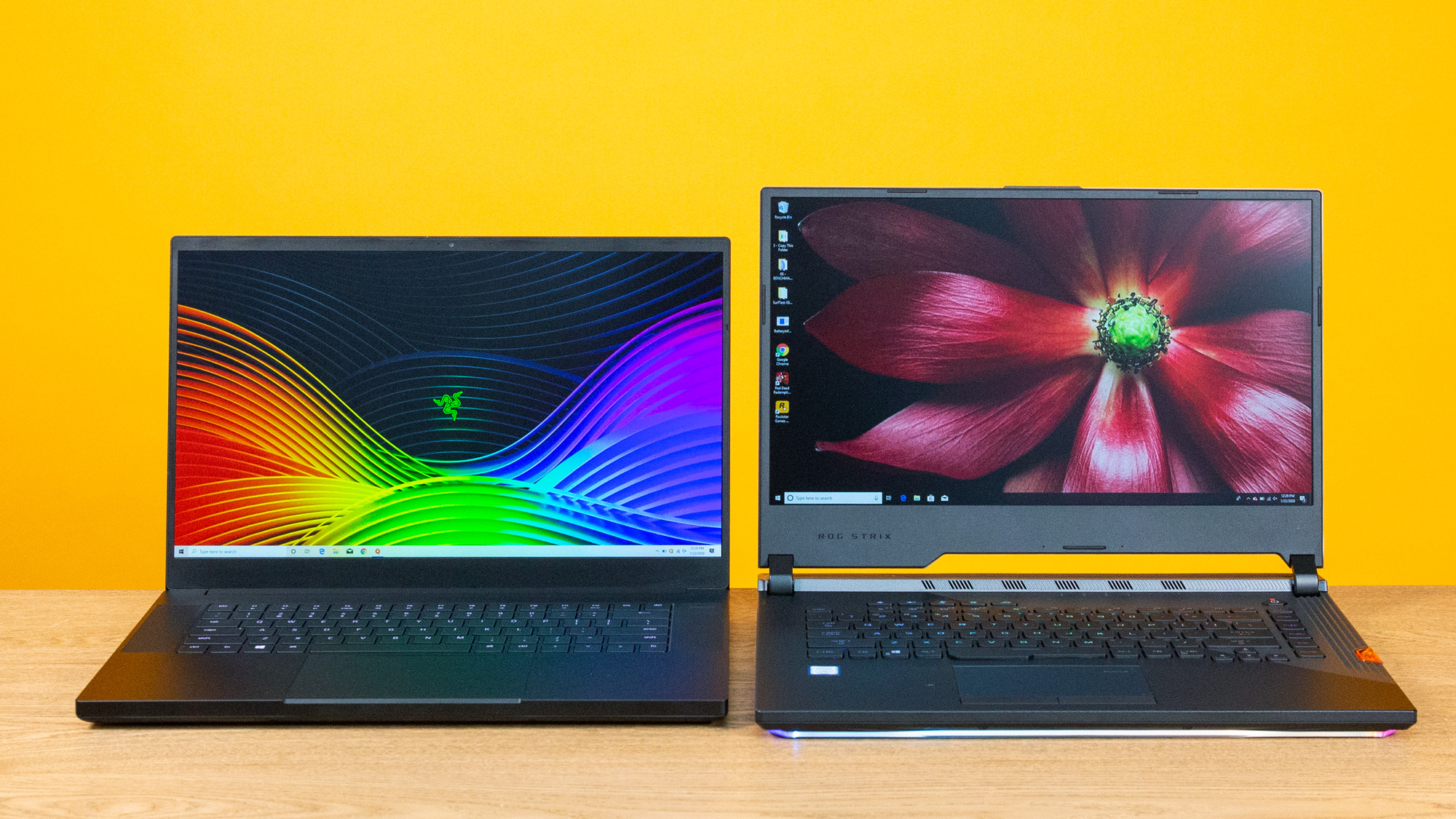
The Asus ROG Strix Scar III and its predecessor have consistently been two of the best gaming laptops around, but how does the Strix Scar fare against an ultrapremium gaming laptop like the Razer Blade 15?.
Both are priced at $1,799. The Strix Scar III offers high-end components, but the Blade 15 is crafted from more premium materials. Does the former compromise on quality, or does the latter falter because of its extreme price for its components?
Here's how these two gaming laptops stack up.
Asus ROG Strix Scar III vs. Razer Blade 15: Specs compared
| Header Cell - Column 0 | Asus ROG Strix Scar III | Razer Blade 15 |
|---|---|---|
| Price | $1,799 | $1,799 |
| Colors | Gray/Black | Black |
| Display | 15.6 inches, 1920 x 1080, 240 Hz | 15.6 inches, 1920 x 1080, 144 Hz |
| CPU | Core i7-9750H | Core i7-9750H |
| GPU | Nvidia GeForce RTX 2060 with 6GB of VRAM | Nvidia GeForce GTX 1660 Ti with 6GB of VRAM |
| RAM | 16GB | 16GB |
| Storage | 1TB SSD | 256GB SSD + 1TB HDD |
| Ports | Three USB 3.1, one USB Type-C, HDMI 2.0, RJ45 Ethernet, headphone jack | Three USB 3.1, one Thunderbolt 3, HDMI 2.0, RJ45 Ethernet, headphone jack, Mini DisplayPort, security lock slot |
| Size | 14.2 x 10.8 x 1 inches | 14 x 9.3 x 0.8 inches |
| Weight | 4.3 pounds | 5 pounds |
Design
The Asus ROG Strix Scar III captures my attention with its elegant, gray, brushed-aluminum hood and RGB-lit ROG logo, while the Razer Blade 15's lid is simply matte black with a plain green Razer logo; it's backlit but plain nonetheless. The Strix Scar III can be a little flashy, however, as it has a light bar that wraps around the chassis.
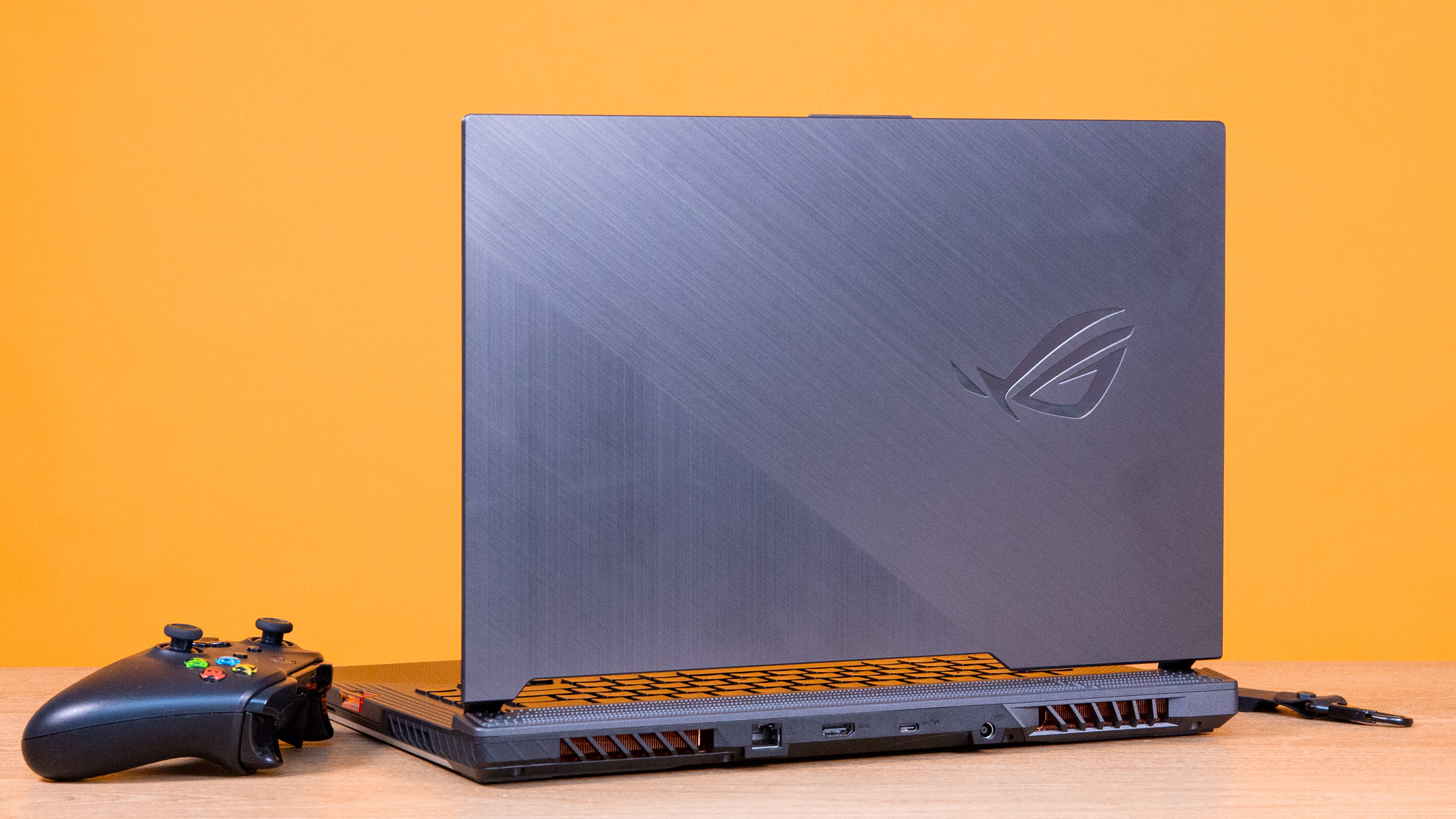
The Strix Scar III has a two-tone carbon-fiber deck with a black side and a gray side split diagonally off-center to the right, whereas the Blade 15's deck once again sports a plain black design.
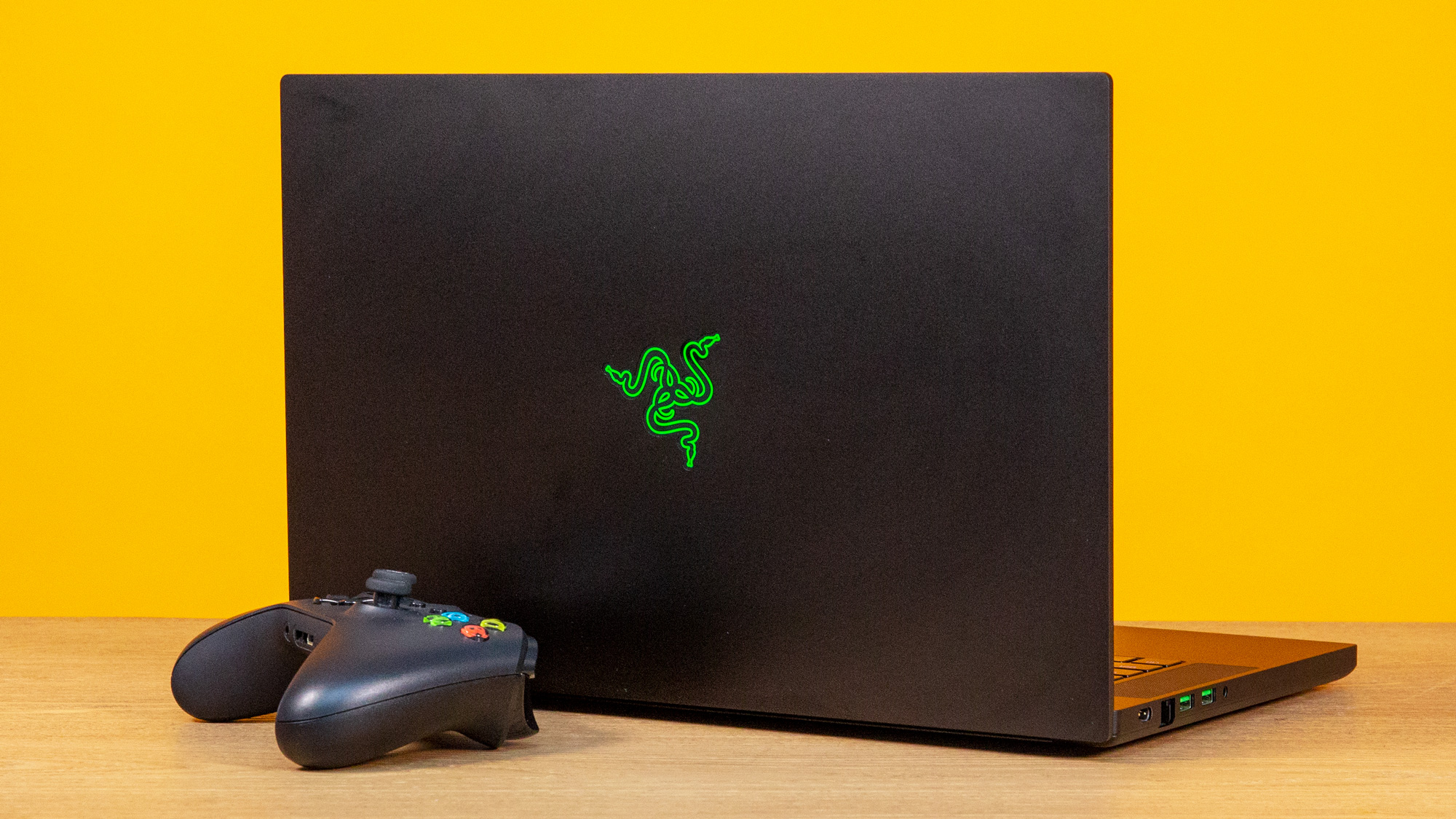
However, the Blade 15 has an advantage in its footprint, as it measures just 14 x 9.3 x 0.8 inches. That's much smaller than the Strix Scar III, which comes in at 14.2 x 10.8 x 1 inches. However, the Strix Scar III is a little lighter, at 4.3 pounds, compared with 5 pounds for the Blade 15.
While the Strix Scar III is a bigger machine, it's much more stylish than the Blade 15.
Stay in the know with Laptop Mag
Get our in-depth reviews, helpful tips, great deals, and the biggest news stories delivered to your inbox.
Winner: Asus ROG Strix Scar III
Ports
While the Asus ROG Strix Scar III is a thicker system, the Razer Blade 15 actually has more ports.
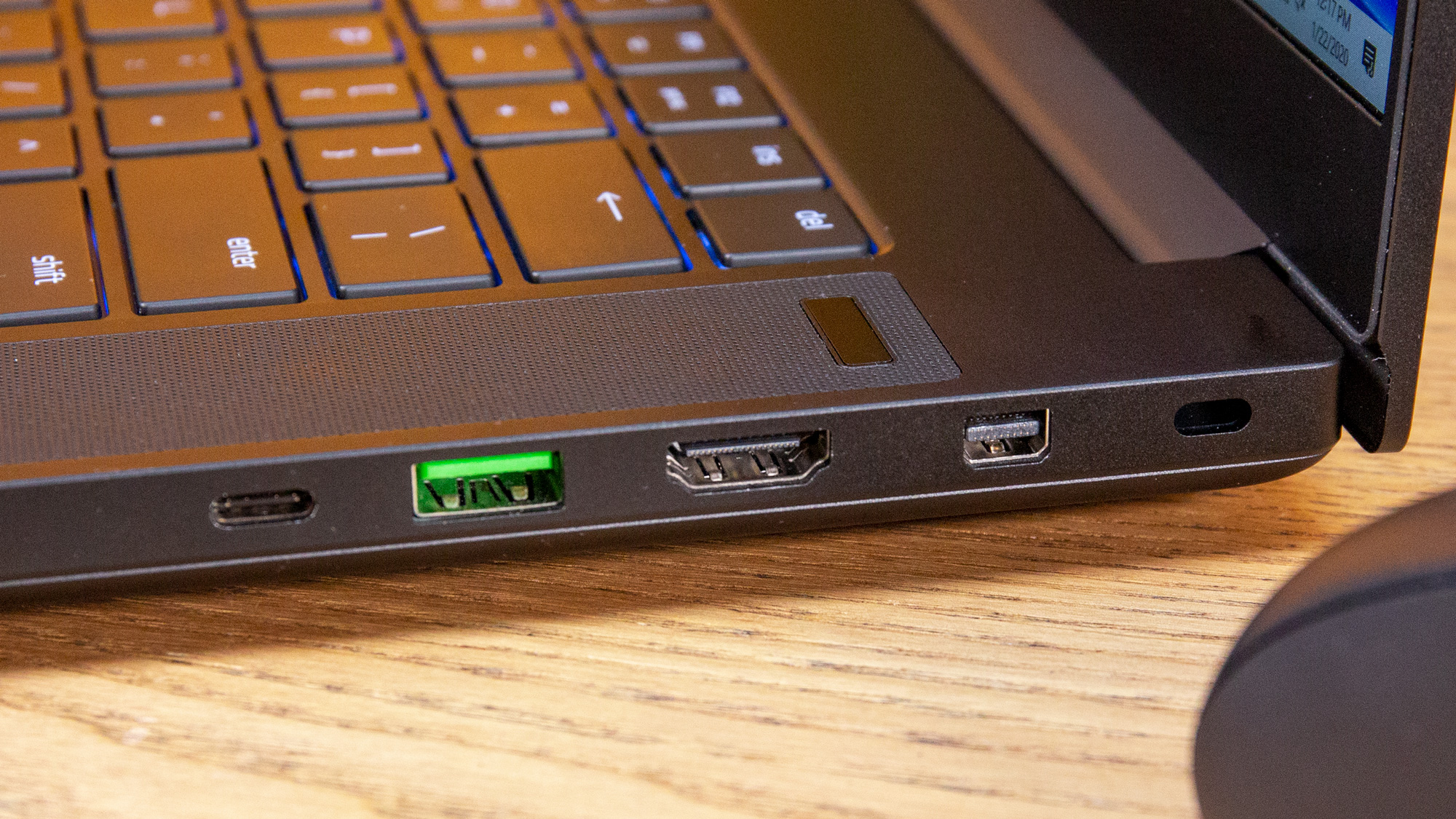
The Strix Scar III has three USB 3.1 Type-A ports, one USB Type-C port, an HDMI 2.0 port, an RJ45 Ethernet port and a headphone jack. Meanwhile, the Blade 15 boasts three USB 3.1 Type-A ports, one Thunderbolt 3 port, an HDMI 2.0 port, an RJ45 Ethernet port, a headphone jack, a Mini DisplayPort and a security lock slot.
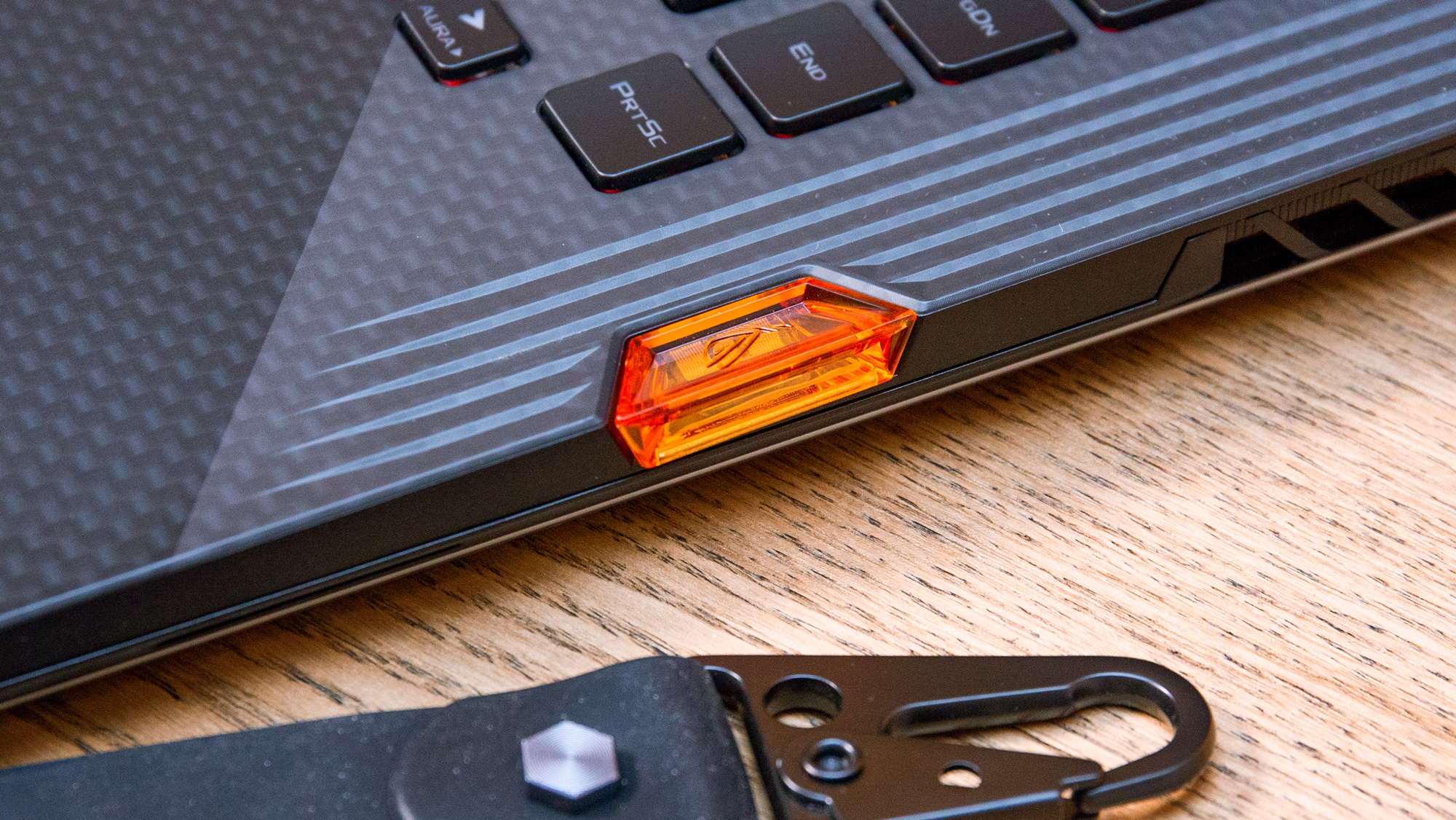
The most notable difference, apart from the Thunderbolt 3 port, is the Mini DisplayPort, which is a necessity for the best VR-ready laptops. However, the Strix Scar III does have an ROG Keystone, which is a magnetic, encrypted key that does two things: It activates custom lighting effects and unlocks a piece of storage on your hard drive.
Winner: Razer Blade 15
Display
Both the Asus ROG Strix Scar III and the Razer Blade 15 sport 15.6-inch, 1920 x 1080 displays. But whereas the Blade 15 has a 144-Hz refresh rate, the Strix Scar III boasts 240 Hz.
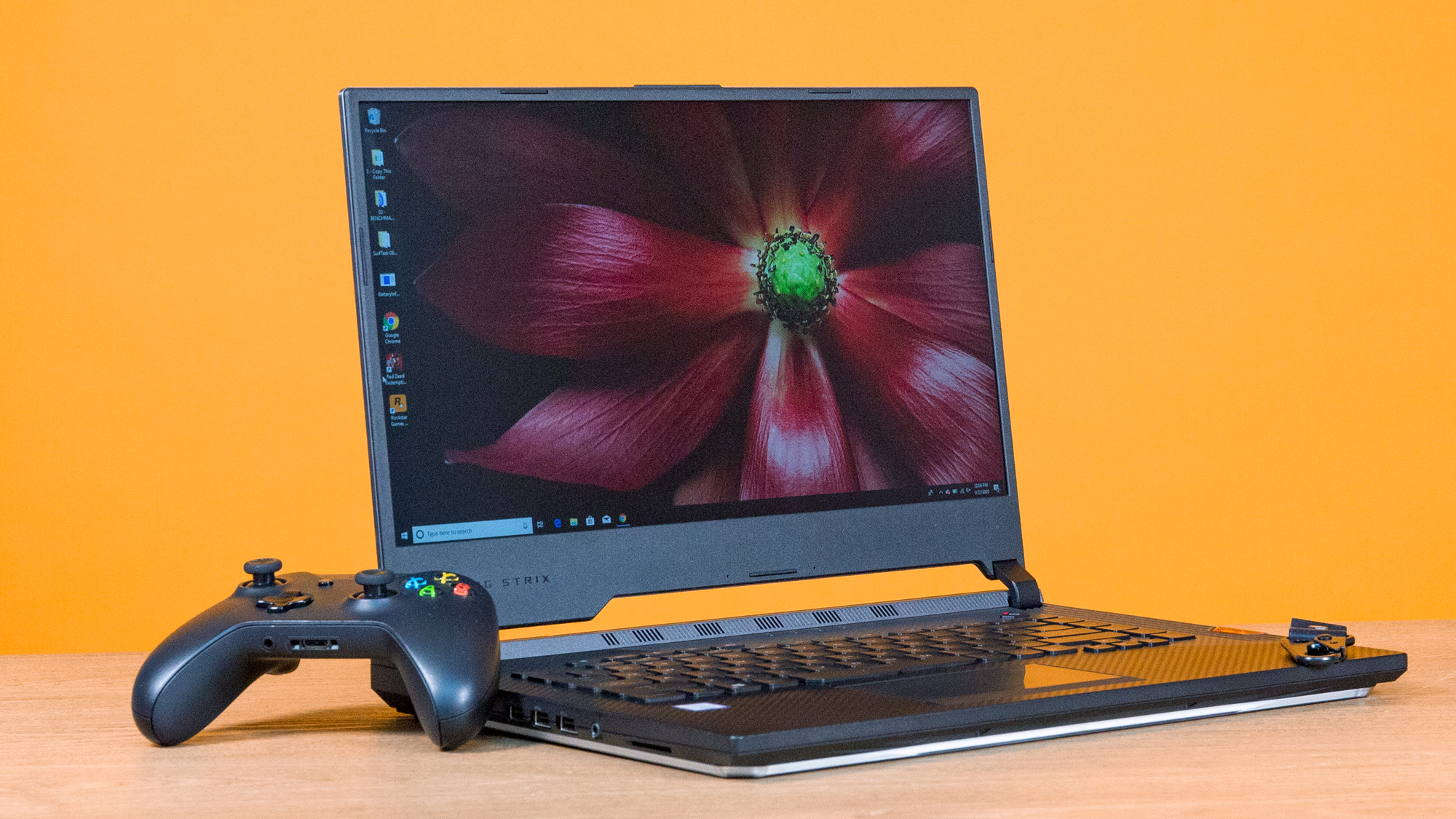
In the Black Widow trailer, the titular character's red hair was equally colorful on both panels. However, the Strix Scar III's screen was better at showing off the stitching in Natasha Romanoff's suit, whereas it seemed muddier on the Blade 15's panel. However, I saw each strand of hair on Romanoff's head on both displays.
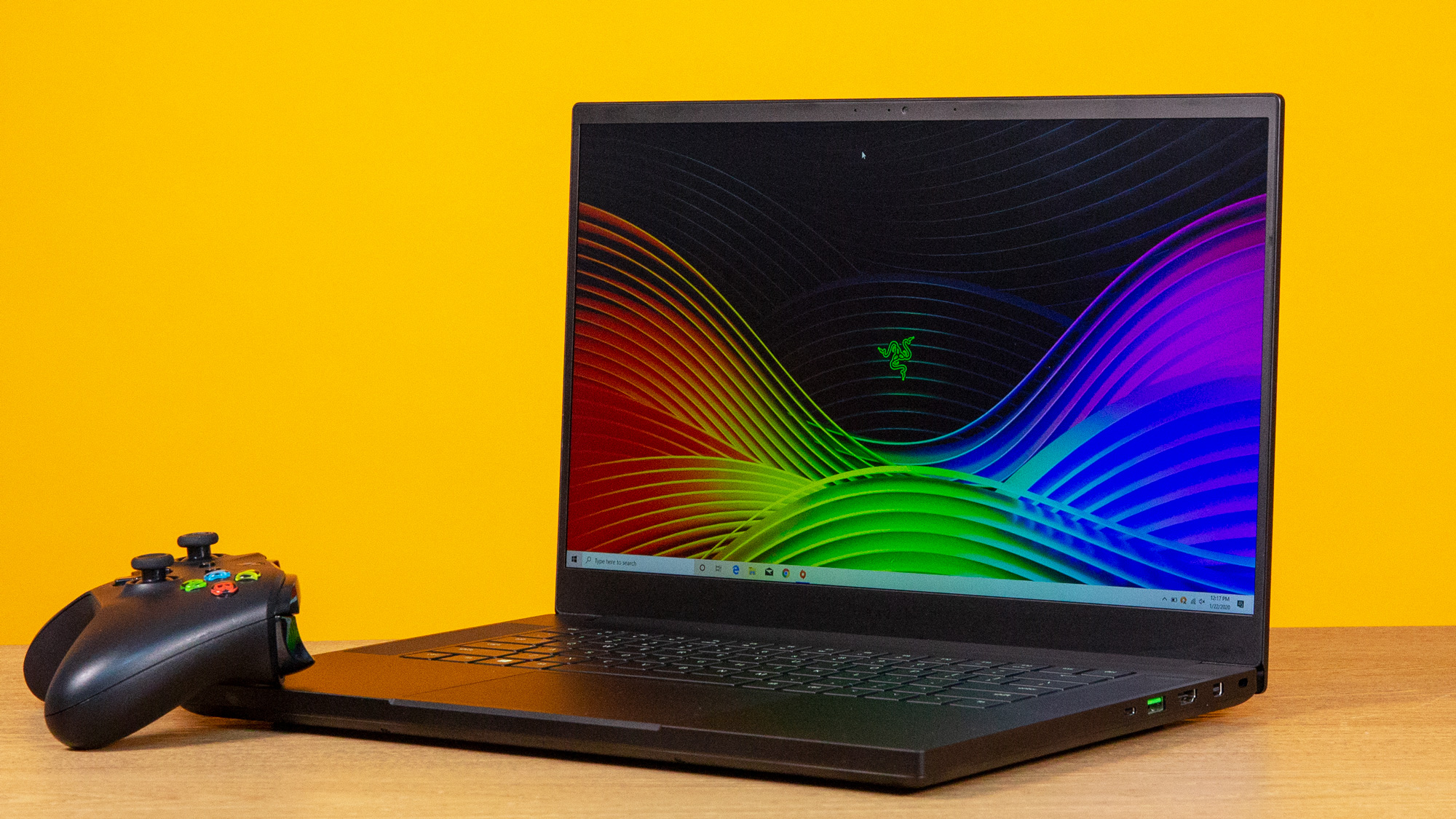
Surprisingly, the Strix Scar III and the Blade 15 matched in color, covering 110% of the sRGB color gamut, and brightness, emitting 275 nits. While both displays were equal on paper, however, the Strix Scar III offers a higher refresh rate, and it looks better than the Blade 15 when they're compared side to side.
Winner: Asus ROG Strix Scar III
Keyboard and touchpad
The Asus ROG Strix Scar III's keyboard isn't quite as clicky as the Razer Blade 15's, but it offers more travel and a heftier bounce. To top it off, the Blade 15's keys are more compact, whereas the Strix Scar III's offer generous spacing. And while neither laptop has a physical number pad, the Strix Scar III does have a digital one.
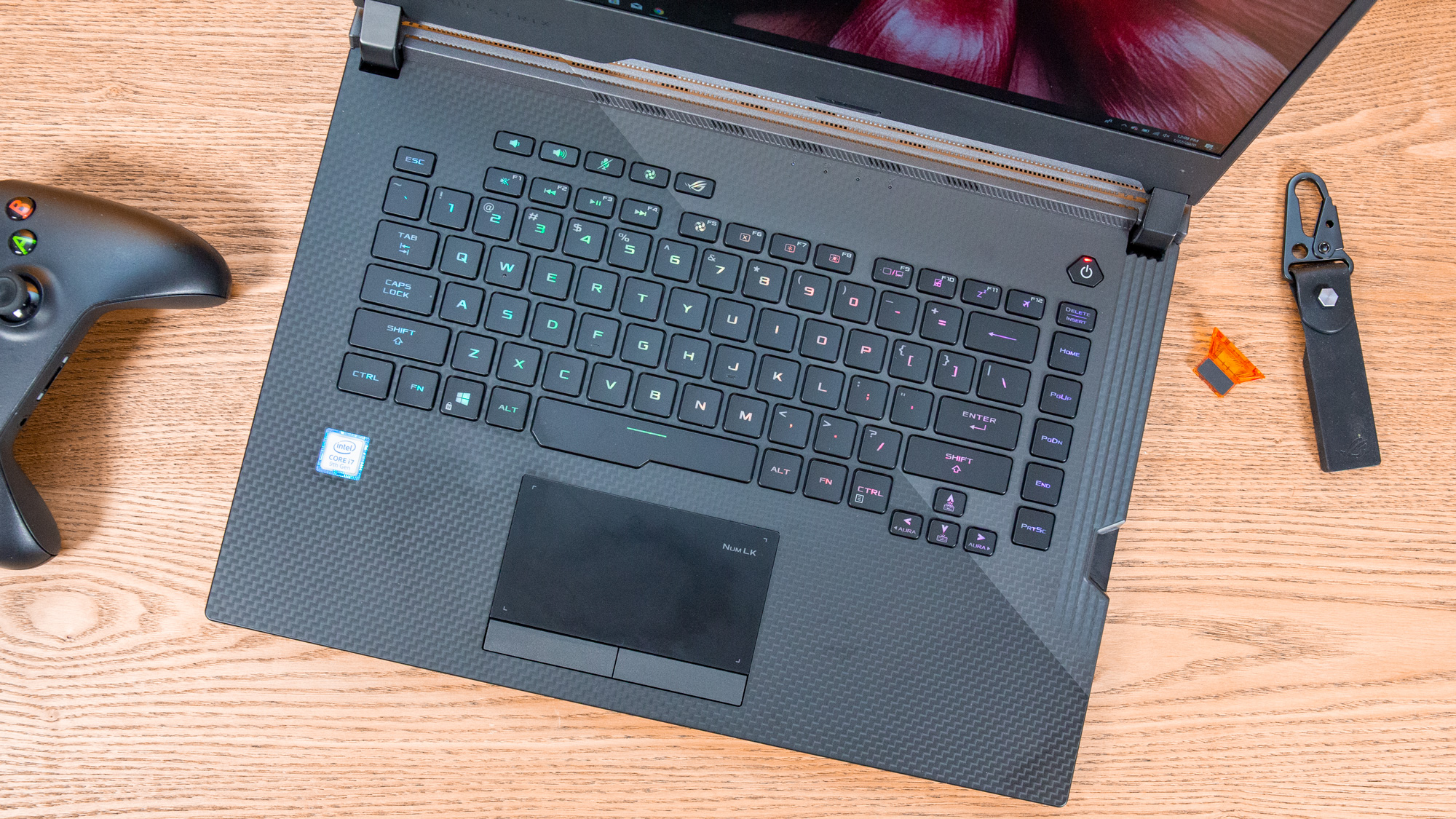
I nailed 81 words per minute on the 10fastfingers.com test on the Strix Scar III's keyboard, which slides past the 74 wpm I scored on the Razer Blade 15. For RGB lighting, the Blade 15 has one-zone key lighting, and the Strix Scar III has per-key lighting, which are basically two extreme examples of lighting.
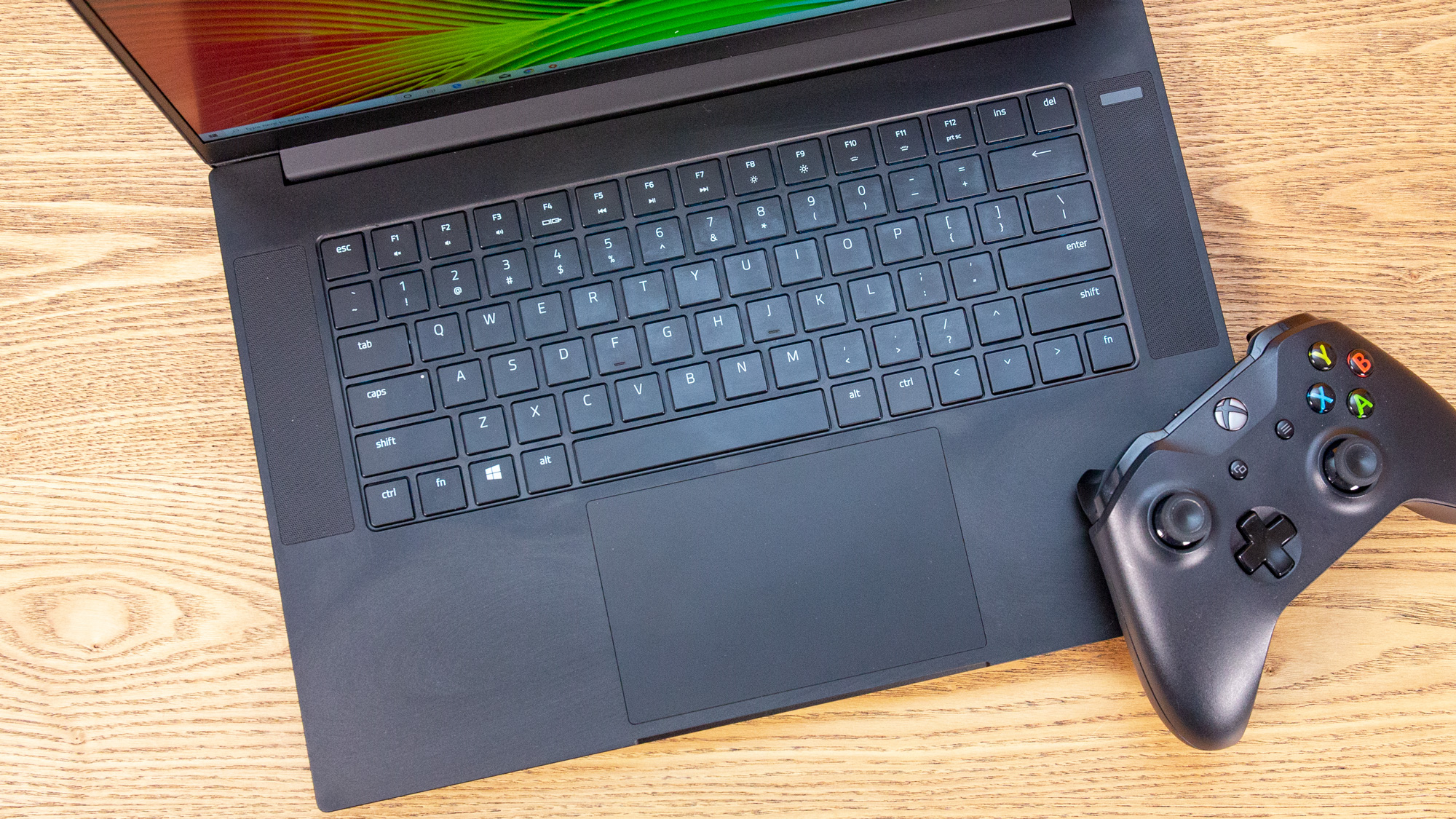
The Blade 15 offers a 5.1 x 3.1-inch smooth and responsive touchpad. The Strix Scar III's 4.1 x 2.8-inch touchpad is a lot smaller, but it does feature a pair of discrete mouse buttons.
Winner: Asus ROG Strix Scar III
Gaming, graphics and VR
The Asus ROG Strix Scar III sports an Nvidia GeForce RTX 2060 GPU with 6GB of VRAM, while the Razer Blade 15 packs a GTX 1660 Ti GPU with 6GB of VRAM. Is it a fair fight? No. But are they the same price? Yes.
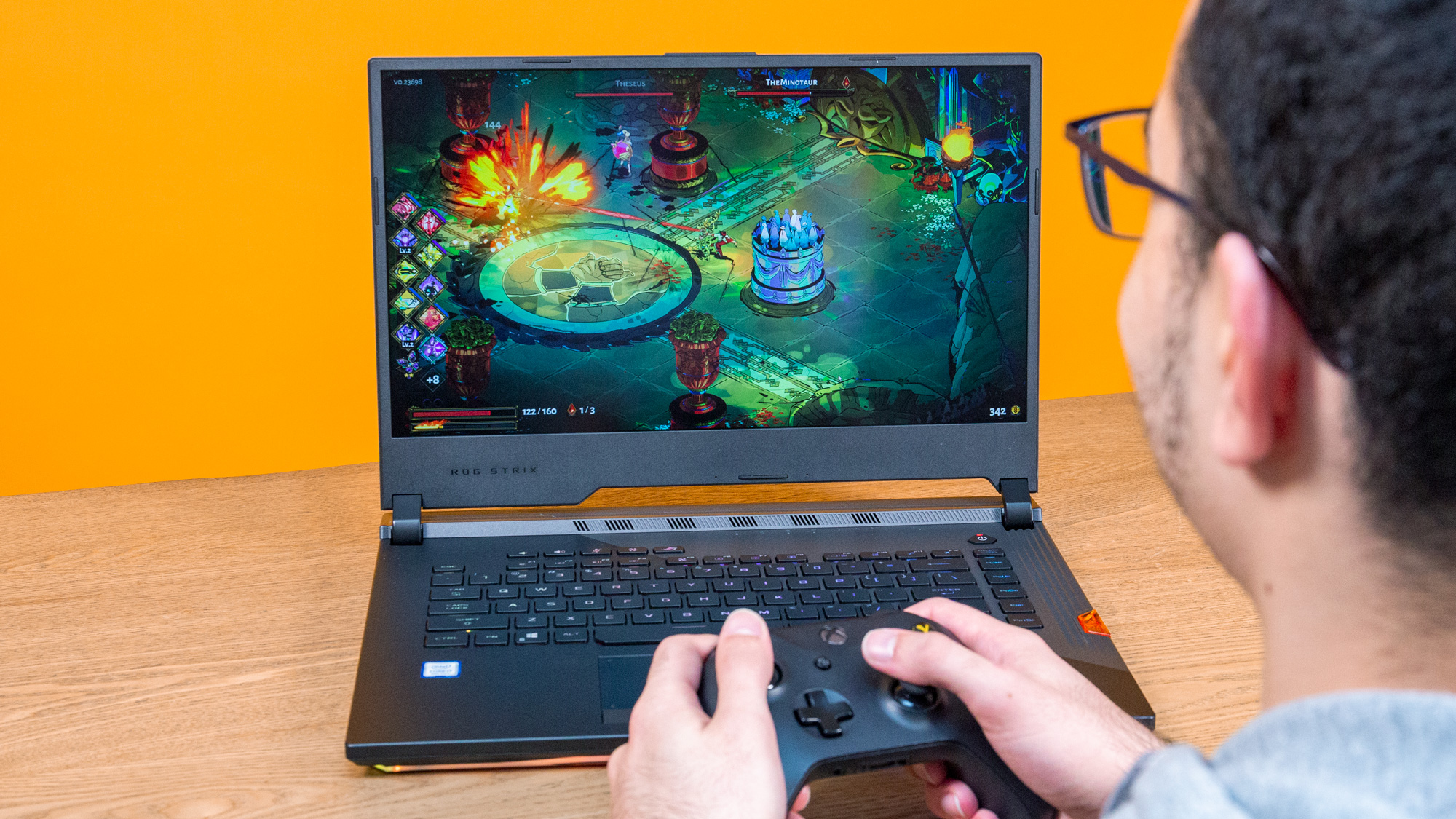
On the Shadow of the Tomb Raider benchmark (Highest, 1080p), Strix Scar III nailed 55 frames per second, surpassing the Razer Blade 15's 48 fps.
The Strix Scar III averaged 86 fps on the Hitman benchmark (Ultra, 1080p), sliding past the Blade 15's 80 fps.
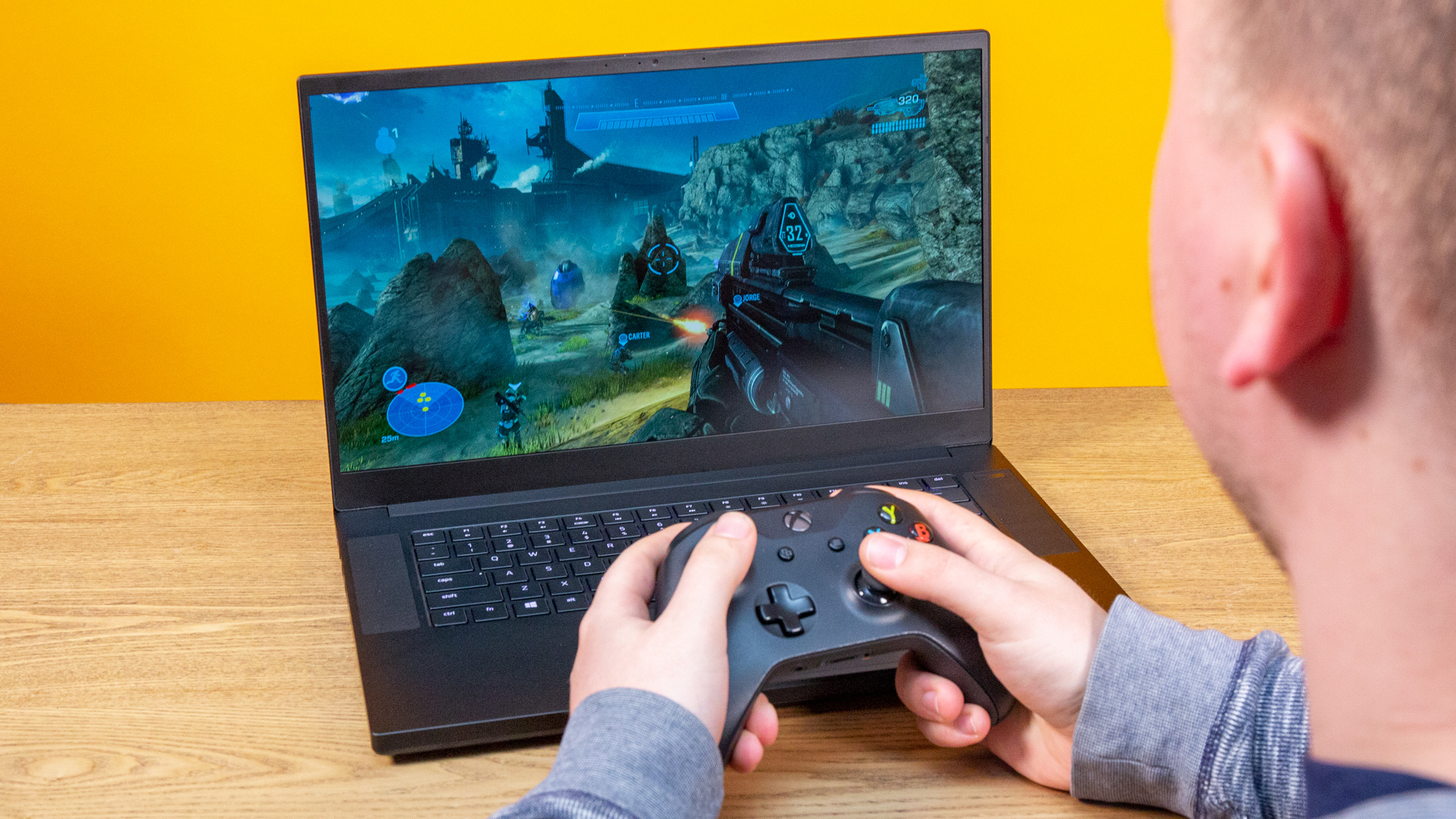
On the Middle-earth: Shadow of War benchmark (Ultra, 1080p), Strix Scar III got 77 fps. That once again beats the Razer Blade 15, which averaged 74 fps.
The Strix Scar III scored a 10.3 out of 11 on the StreamVR Performance Test, sailing past the 9.6 from the Blade 15.
Winner: Asus ROG Strix Scar III
Performance
Both the Asus ROG Strix Scar III and the Razer Blade 15 rock an Intel Core i7-9750H processor with 16GB of RAM.
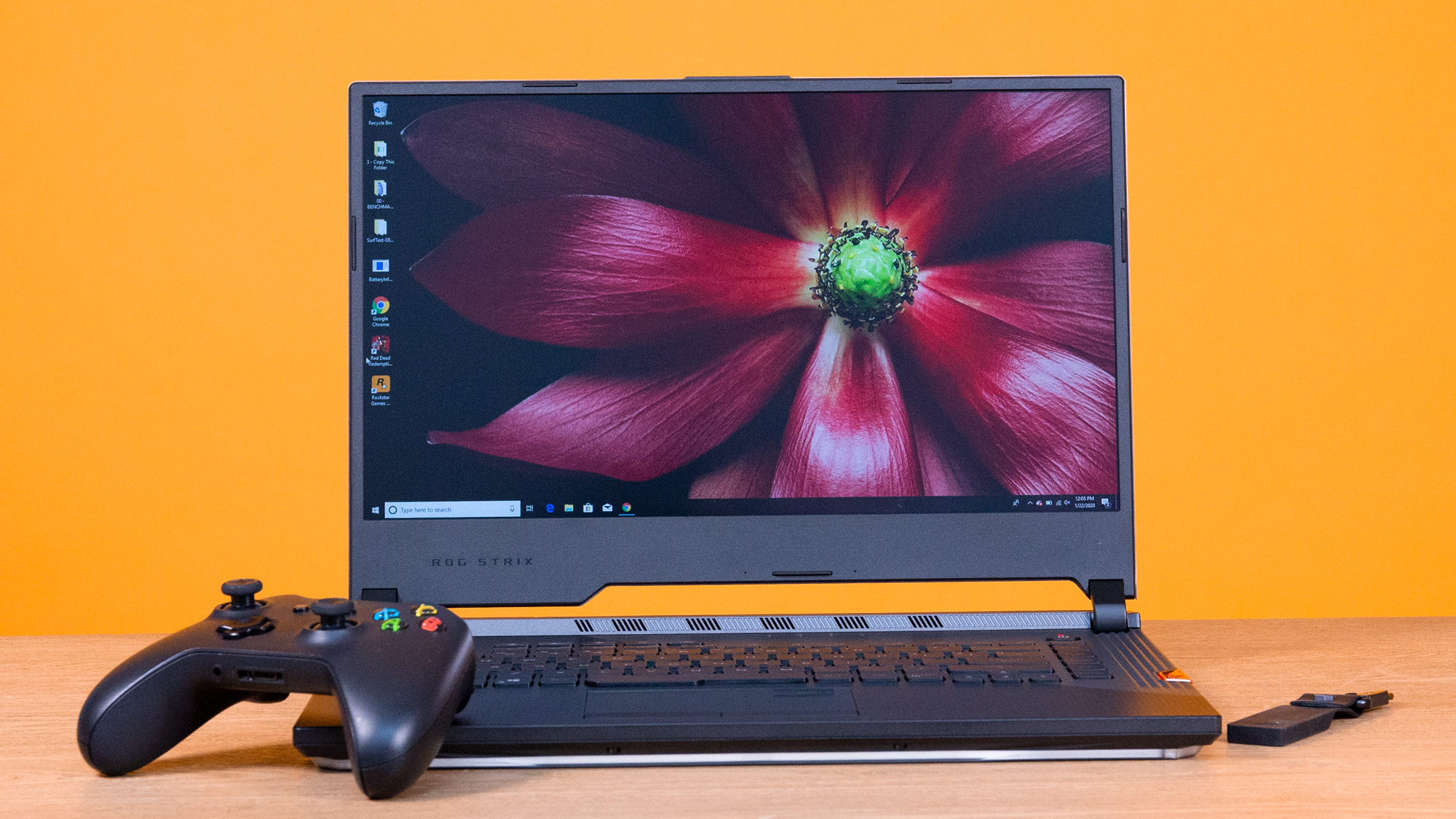
On the Geekbench 4.3 overall performance test, the Strix Scar III scored 23,196, crushing the Blade 15's 19,542.
The Strix Scar III transcoded a 4K video to 1080p in 10 minutes and 34 seconds, sliding past the 10:47 from the Blade 15.
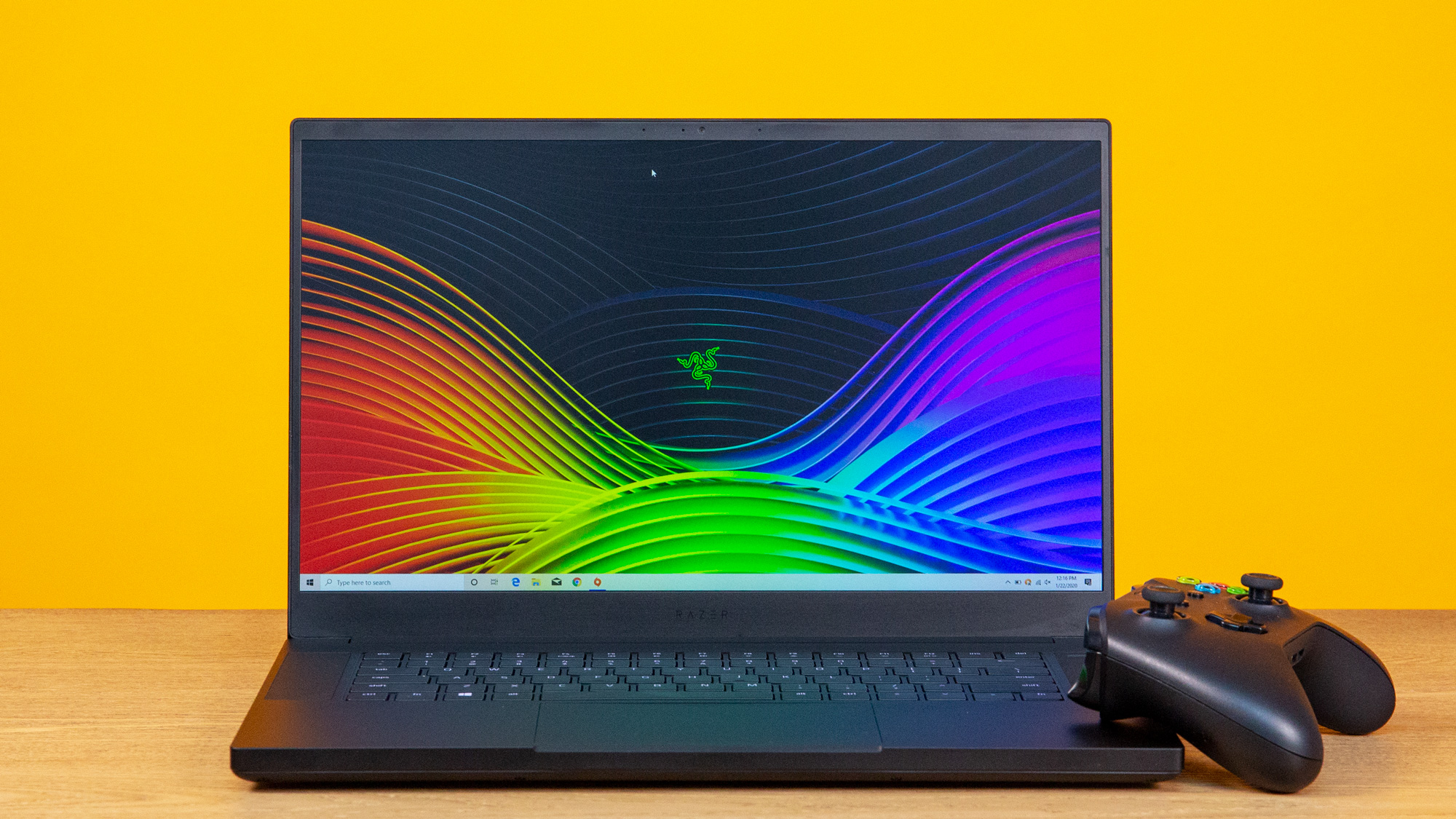
Razer's 256GB SSD copied 4.97GB of data in 9 seconds, which translates to a speed of 566 megabytes per second. That's slightly faster than Asus' 1TB SSD, which had a transfer rate of 525 MBps.
Winner: Asus ROG Strix Scar III
Battery life
Despite being a pair of power-hungry gaming laptops, the Asus ROG Strix Scar III and the Razer Blade 15 have great battery life. The Blade 15 survived 5 hours and 48 minutes on the Laptop Mag battery test, outlasting the Strix Scar III's runtime of 5 hours and 9 minutes.
Winner: Razer Blade 15
Value and configurations
Despite being tested at the same price ($1,799), the Asus ROG Strix Scar III and the Razer Blade 15 had wildly different configurations.
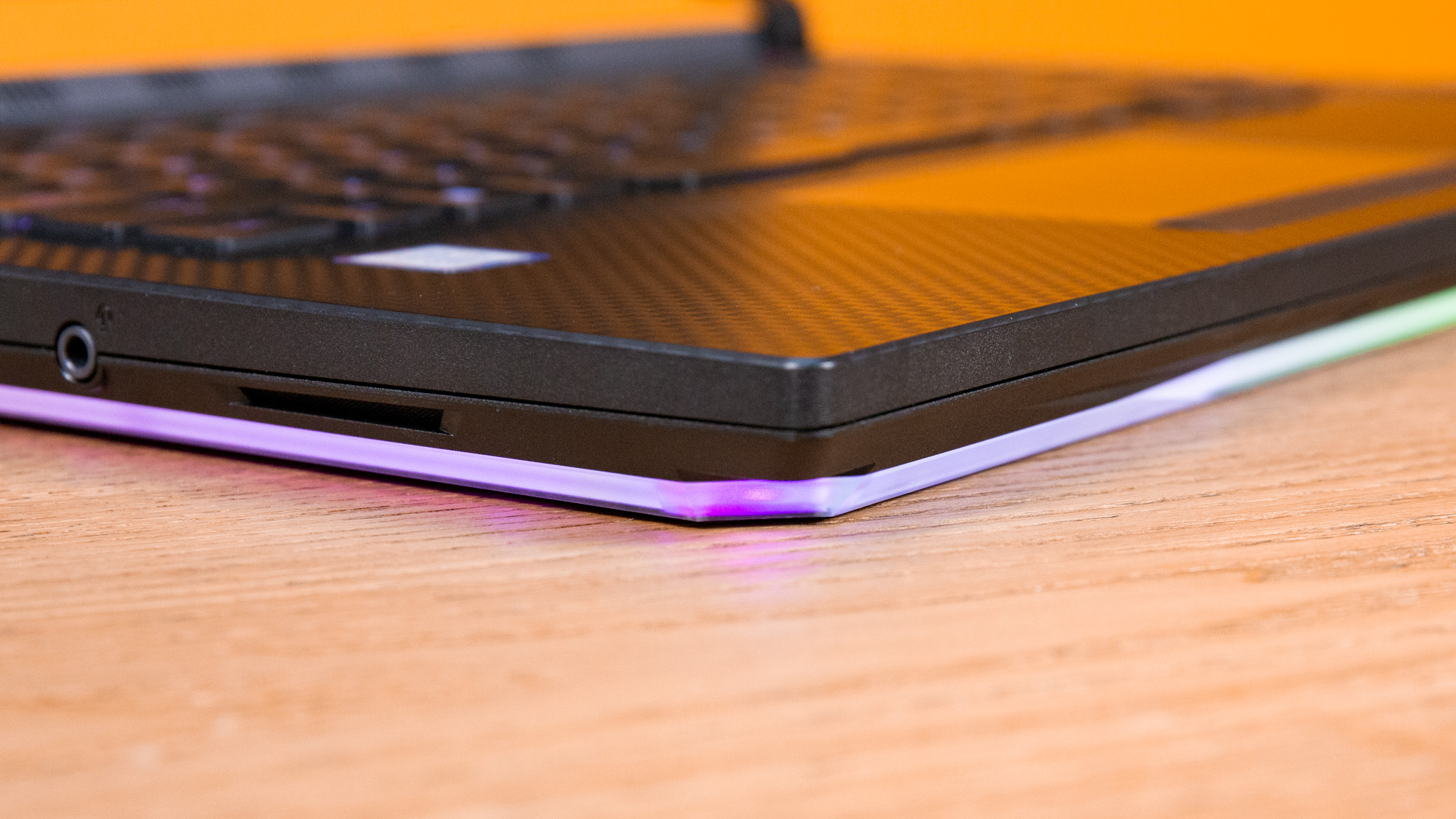
If you want the cheapest model of the Strix Scar III, you have to get the 17-inch version, which costs $1,238 and comes with a Core i7-9750H CPU, a GTX 1660 Ti GPU, 16GB of RAM, a 512GB PCIe SSD, a 1TB HDD and a 240-Hz display.
The cheapest Blade 15 costs $1,599 and comes with a Core i7-9750H CPU, an Nvidia GeForce GTX 1660 Ti GPU, 16GB of RAM, a 128GB SSD, a 1TB HDD and a 60-Hz display.
Our $1,799 Blade 15 packed the same specs as the base model, except it upgraded to a 144-Hz display and a 256GB SSD. The $1,799 Strix Scar III boasts an RTX 2060 GPU and a 1TB SSD. If you want an RTX 2060 GPU on the Blade 15, you can get it for $1,899, but you'll get only a 512GB SSD.
Stepping up to the Strix Scar III's RTX 2070 model costs $2,299, while the bump for the Blade 15 jumps to $2,099 (still no upgrade in storage).
The Blade 15 can be upgraded to a 4K OLED display and an RTX 2080 GPU, and that model costs a whopping $3,299.
While the Blade 15 is slightly more configurable, the Strix Scar III is way more affordable, and you get better components for your money.
Winner: Asus ROG Strix Scar III
Overall winner: Asus ROG Strix Scar III
The Asus ROG Strix Scar III dominated in nearly every category, and there's not a damn thing the Razer Blade 15 could do about it. They were priced exactly the same, and yet the Strix Scar III won for design, display, keyboard, graphics, performance and even value.
| Header Cell - Column 0 | Asus ROG Strix Scar III | Razer Blade 15 |
|---|---|---|
| Design (10) | 8 | 7 |
| Ports (10) | 8 | 9 |
| Display (15) | 13 | 12 |
| Keyboard/Touchpad (15) | 13 | 12 |
| Graphics, Gaming and VR (15) | 14 | 13 |
| Performance (15) | 14 | 13 |
| Battery Life (10) | 7 | 8 |
| Value (10) | 8 | 6 |
| Overall (100) | 85 | 80 |
The Blade 15 is still a great gaming laptop if you have the dough to spend. It offers better battery life, more ports and a higher-end configuration than the Strix Scar III.
But if you're focused on which laptop will give you better performance for your money, the Strix Scar III is the better choice.

Rami Tabari is the Reviews Editor for Laptop Mag. He reviews every shape and form of a laptop as well as all sorts of cool tech. You can find him sitting at his desk surrounded by a hoarder's dream of laptops, and when he navigates his way out to civilization, you can catch him watching really bad anime or playing some kind of painfully difficult game. He’s the best at every game and he just doesn’t lose. That’s why you’ll occasionally catch his byline attached to the latest Souls-like challenge.
